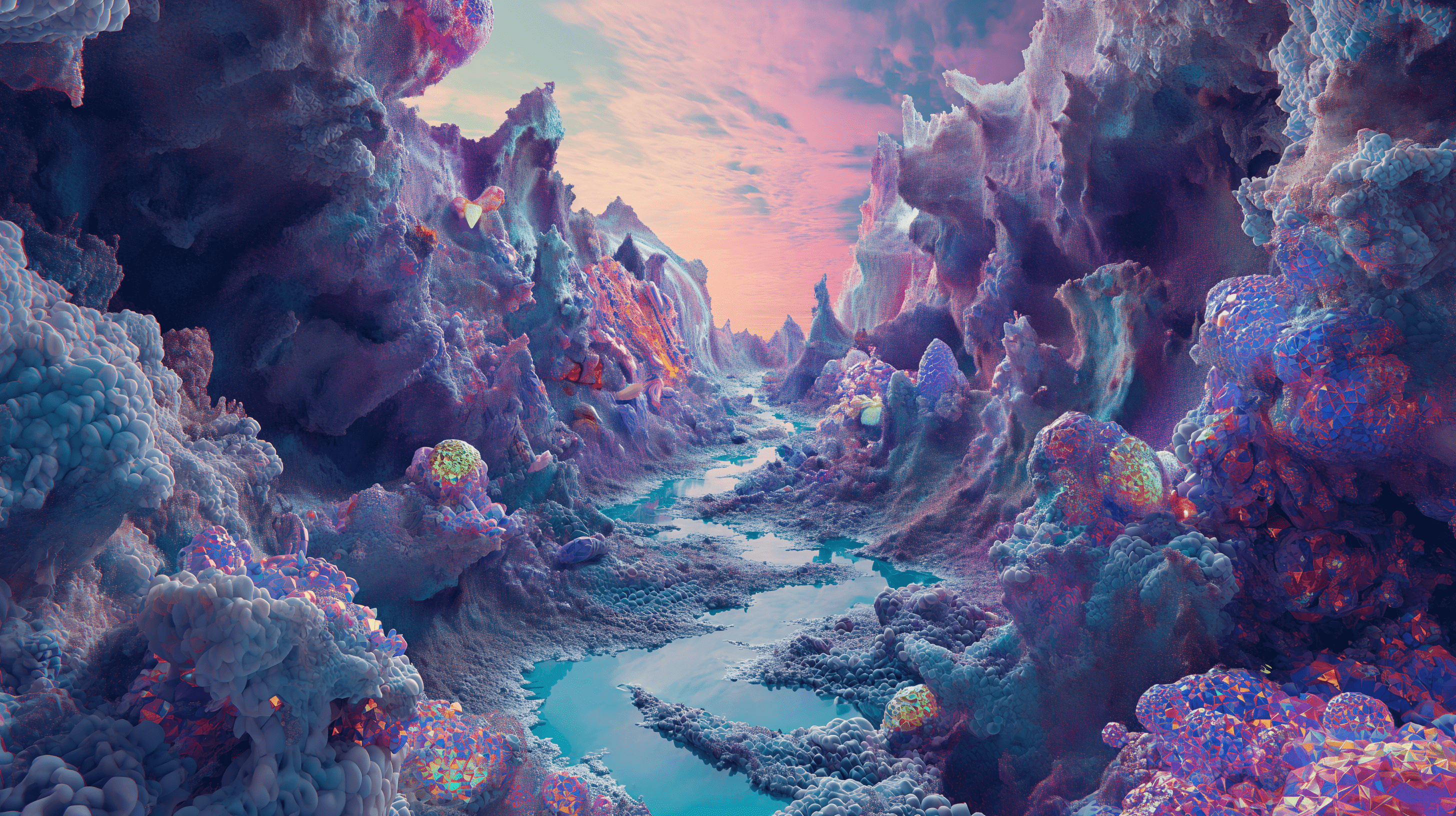Wstecz
The Effects of Blue Light on Sleep: What Science Says

Introduction
In our digitally dominated world, the conversation around the effects of blue light on sleep is more relevant than ever. With the advent of smartphones, tablets, and LED lighting, our exposure to blue light has skyrocketed, disrupting our natural sleep patterns and raising concerns about our overall health. Blue light, a component of the visible light spectrum, is omnipresent during the day but particularly impactful at night when it can interfere with our circadian rhythm, the internal clock that tells our bodies when to sleep and when to wake up. Understanding the dynamics of blue light and its interaction with our sleep mechanisms is crucial in an era where screens are an integral part of our daily lives.
Understanding Blue Light
Blue light is a type of high-energy visible (HEV) light, sitting at one end of the light spectrum where the wavelengths are shorter but the energy levels are higher. It's what makes the sky look blue on a sunny day. While natural sunlight is the most significant source of blue light, the proliferation of LED lighting and digital screens has dramatically increased our exposure to artificial sources, especially after sundown.
The effects of blue light on the body are rooted in its influence on the production of melatonin, the hormone responsible for regulating sleep. Exposure to blue light at night can trick our brains into thinking it's still daytime, reducing melatonin production and making it harder to fall and stay asleep. This disruption to our natural sleep-wake cycle can have a cascade of negative health effects, from impaired cognitive function to increased risk of chronic illnesses.
Understanding blue light isn't just about recognizing its sources or the science behind it; it's about realizing its pervasive presence in our daily routines and its potential impact on our sleep health. As we delve deeper into the relationship between blue light and sleep, we begin to uncover actionable insights that can help mitigate its effects and protect our natural sleep patterns in this age of digital saturation.
The Science Behind Blue Light and Sleep
The interplay between blue light and sleep revolves significantly around our circadian rhythm, a natural, internal process that regulates the sleep-wake cycle and repeats roughly every 24 hours. Exposure to natural light during the day helps to keep our circadian rhythms aligned with the environment. However, the advent of artificial blue light from screens and LED lights has introduced a potent stimulus that can disrupt this alignment. Blue light, due to its short wavelength, is particularly effective at inhibiting the secretion of melatonin, a hormone produced by the pineal gland that signals to our body it's time to sleep. When our eyes are exposed to blue light in the evening, it can trick our brain into thinking it's still daytime, thus delaying melatonin production and disrupting our sleep onset.
Research shows that exposure to blue light, especially in the hours leading up to bedtime, can decrease the quality and duration of sleep. This disruption can have a cascading effect on various aspects of health, given that sleep is a foundational component of good health and well-being. Understanding this connection is crucial for developing strategies to mitigate the impact of blue light on our sleep patterns, ensuring we maintain the natural rhythm that our body's health relies upon.
The Impact of Blue Light on Sleep Quality
Numerous studies and research initiatives have sought to quantify and understand the impact of blue light on sleep quality. For instance, a Harvard study compared the effects of 6.5 hours of exposure to blue light to exposure to green light of comparable brightness. The blue light suppressed melatonin for about twice as long as the green light and shifted circadian rhythms by twice as much. Such findings underscore the potent effect of blue light on our sleep architecture and overall health.
Beyond the laboratory, personal anecdotes and case studies echo these findings. Many individuals report difficulty falling asleep or experiencing restless nights after prolonged exposure to screens, attributing this disruption to the blue light emitted by these devices. For example, a person might notice that on nights when they binge-watch their favorite show on a tablet, their sleep is noticeably poorer compared to when they read a book. These anecdotal experiences, backed by scientific research, highlight the pervasive impact of blue light on our sleep quality and underline the importance of managing our exposure to preserve our health and well-being.
How to Reduce Blue Light Exposure
Reducing blue light exposure, especially in the hours leading up to bedtime, is crucial for maintaining our natural sleep cycle. The good news is that there are several effective strategies to minimize blue light impact without having to completely abandon our electronic devices. One simple yet effective approach is to adopt the 20-20-20 rule during evening screen time: every 20 minutes, take a 20-second break to look at something 20 feet away. This not only reduces eye strain but also decreases continuous blue light exposure.
Adjusting the settings on our devices can also make a significant difference. Many smartphones, tablets, and computers now offer built-in blue light filters or "night mode" settings that alter the screen's color temperature to emit less blue light. These settings can be programmed to turn on automatically in the evenings, aligning with your sleep schedule.
Beyond digital device settings, the environment plays a key role in blue light exposure. Dimming indoor lights or using red or orange bulbs in the evening can create a more sleep-friendly ambiance. For those seeking more advanced solutions, blue light blocking glasses are an option. These glasses have specially crafted lenses that filter out blue light and can be worn when using electronic devices or in environments with high LED lighting.
Does using your phone before bed affect your sleep?
The link between smartphone use before bed and sleep disruption is increasingly supported by scientific research. The blue light emitted by phone screens is particularly potent in suppressing melatonin production, thereby delaying sleep onset and reducing sleep quality. This doesn't just affect how quickly you fall asleep; it also impacts the overall architecture of your sleep, reducing the proportion of restorative deep sleep.
To mitigate these effects, it's recommended to establish a digital curfew, ceasing all electronic device use at least an hour before bedtime. This allows your brain to naturally ramp up melatonin production in preparation for sleep. For those who find it challenging to disconnect, alternatives like using blue light filters or adjusting the device's night settings can help. However, it's also important to be mindful of the content consumed before bed, as engaging or stressful material can further hinder the ability to fall asleep.
By understanding the significant impact of nighttime phone use on sleep and implementing these strategies, individuals can enhance their sleep quality and overall health in our tech-centric world.
Can blue light glasses improve sleep quality?
The increasing awareness of blue light's impact on sleep has led to the popularity of blue light blocking glasses, which claim to improve sleep quality by filtering out the blue light emitted from screens. Studies have shown that wearing these glasses in the hours leading up to bedtime can help reduce the suppression of melatonin production, thus potentially aiding in better sleep. However, it's essential to understand that these glasses are not a one-size-fits-all solution. The effectiveness can vary based on individual sleep patterns, the specific wavelengths of blue light blocked, and the timing of use. For optimal benefits, it's recommended to wear blue light glasses during the evening, especially if you're using electronic devices or are exposed to LED lighting. While they are not a substitute for good sleep hygiene, they can be a valuable tool in your arsenal for combating the sleep-disrupting effects of blue light.
Pyrilia: Your Partner in Managing Blue Light Exposure
In the journey to better sleep in our tech-saturated world, Pyrilia emerges as a valuable ally. Utilizing its journaling feature, users can track their sleep patterns, document their exposure to blue light, and even note the use of blue light blocking tools or glasses. By maintaining a daily log of sleep times, perceived sleep quality, and evening routines, users can gain insights into how their blue light exposure affects their sleep. Pyrilia encourages users to be mindful of their evening habits, offering a structured platform to observe and reflect on how changes in blue light exposure might influence their sleep quality over time. Through consistent tracking and reflection, Pyrilia users can tailor their evening routines to optimize sleep, making informed decisions to enhance their overall sleep health.
Conclusion
The dialogue surrounding the effects of blue light on sleep is more than just a trend; it's a crucial consideration in our 24/7 connected world. As we've explored, blue light can significantly impact our circadian rhythm and melatonin production, thereby influencing our sleep quality and overall health. The science is clear: exposure to blue light, especially in the evening, can disrupt our natural sleep patterns, making it harder to fall asleep and potentially diminishing the restorative power of our sleep.
We've delved into practical strategies to mitigate these effects, from the use of blue light blocking glasses to adapting our evening routines to minimize screen time. These tools and tips are not just about improving sleep; they're about enhancing our overall well-being in a world where digital devices are omnipresent.
As we conclude, the message is one of empowerment and awareness. By understanding the effects of blue light and taking proactive steps to manage our exposure, we can protect our sleep and, by extension, our health. So, let's be mindful of our screen time, especially as bedtime approaches, and consider integrating tools and habits that can help us maintain the delicate balance of our circadian rhythms. In doing so, we not only improve our sleep but also our quality of life in an increasingly digital world.
Jeśli lubisz ten post, rozważ dołączenie do Pyrilii.
Pyrilia to idealne miejsce do przechowywania myśli, wspomnień i refleksji.
Uchwyć codzienne myśli, wyróżnij ważne doświadczenia i przeżyj je dzięki naszej unikalnej funkcji Odtwarzania. Przyjmij podróż w kierunku wzmocnionych wspomnień i samopoznania. Twoja historia, pięknie zachowana.
Wypróbuj

Sprawdź nasze inne posty:




